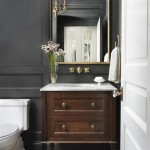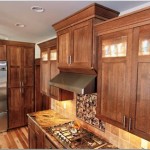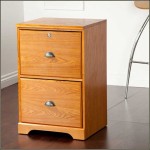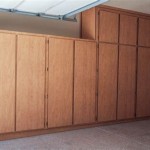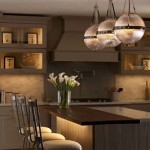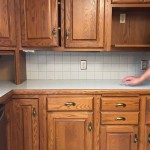Optimal Knob Location on Cabinet Doors: A Comprehensive Guide
The placement of cabinet knobs, while seemingly a minor detail, significantly impacts both the aesthetics and functionality of cabinetry. Proper knob placement ensures ease of use, prevents unnecessary wear and tear on cabinet surfaces, and contributes to the overall design harmony of a kitchen, bathroom, or any space with cabinetry. This article delves into the factors influencing optimal knob placement, providing guidelines applicable to various cabinet door styles and installation scenarios.
Understanding the Factors Influencing Knob Placement
Several key considerations inform the selection of ideal knob locations. These factors range from the physical attributes of the cabinet door itself to ergonomic principles related to user comfort and accessibility. Ignoring these factors can result in a cabinet installation that feels awkward or looks unbalanced.
One fundamental aspect is the style of the cabinet door. A traditional raised-panel door will have different visual cues and structural considerations compared to a modern, slab-front door. The presence of panels, frames, or other design elements will naturally influence where a knob looks most balanced and feels most comfortable to grasp.
The size and weight of the cabinet door also play a critical role. Larger, heavier doors require a more robust pull point, potentially necessitating a knob placed closer to the edge of the door to provide adequate leverage. Conversely, smaller, lighter doors may tolerate a knob closer to the center without sacrificing ease of opening.
Ergonomics should never be overlooked. The user's height and reach are important factors. The typical range for cabinet hardware placement is between 2 and 4 inches from the corner of the door, but this can be adjusted based on the height and reach of the primary users of the cabinets. Consider the needs of individuals with limited mobility or disabilities, ensuring hardware is easily accessible and requires minimal effort to operate. Mock-up installations can be helpful to assess ergonomic suitability.
Finally, the overall style and design of the room should be considered. The hardware should complement the other design elements in the room, such as the countertops, backsplash, and appliances. The placement of the knobs should also be consistent throughout the room to create a cohesive look.
Specific Placement Guidelines for Various Door Styles
While general principles apply, the specific placement guidelines for cabinet knobs will vary depending on the style of the cabinet door. Here's a breakdown of common door styles and their recommended knob locations:
Slab Doors: These are the simplest type of cabinet door, consisting of a single, flat panel. For slab doors, a common guideline is to place the knob centered horizontally and vertically on the door panel. However, this can sometimes create a visually uninteresting effect, especially for larger doors. An alternative is to position the knob 2-4 inches from the edge of the door on the hinge side and 2-4 inches from the top of a upper cabinet door and the bottom of a lower cabinet door. This placement provides good leverage and creates a clean, modern look.
Shaker Doors: Shaker doors are characterized by a flat center panel surrounded by a frame. The most common placement for knobs on Shaker doors is on the frame, usually in the lower corner for base cabinets and the upper corner for wall cabinets. This placement aligns with the traditional aesthetic of Shaker cabinetry and provides a solid mounting point. Generally, the knob is placed where the stile and rail meet, although some opt for centering the knob within the stile.
Raised-Panel Doors: Raised-panel doors feature a center panel that is raised above the surrounding frame. The placement of knobs on raised-panel doors can be more challenging due to the decorative details. A common approach is to place the knob on the stile, similar to Shaker doors. However, careful consideration should be given to the design of the raised panel. If the panel is highly decorative, placing the knob on the stile may be preferable to avoid interfering with the design. If the panel is relatively simple, centering the knob within the panel itself may be an option.
Glass-Front Doors: For cabinets with glass inserts, specific considerations are necessary. Ideally, knobs should be mounted on the frame surrounding the glass panel, avoiding direct contact with the glass itself. Drilling into the glass is generally not recommended due to the risk of breakage. The frame thickness must therefore be sufficient to accommodate the hardware and any necessary mounting screws.
Inset Cabinet Doors: Inset cabinet doors sit flush with the cabinet frame, creating a seamless look. Placement of knobs on inset doors is typically the same as for other door styles, with the specific location determined by the door's design. The key consideration is ensuring the hardware does not interfere with the door's ability to close properly and maintain its flush alignment with the frame.
Practical Installation Techniques and Considerations
Proper installation techniques are crucial for achieving a professional and functional outcome. Even with meticulous planning, poorly executed installation can compromise the aesthetics and durability of the cabinetry.
Accurate measurements are paramount. Before drilling any holes, use a measuring tape and level to precisely mark the intended knob locations. Consistency is key, so ensure all knobs are placed at the same height and distance from the edge of the door. Using a template can significantly improve accuracy and reduce the risk of errors, especially when installing multiple knobs.
Choosing the correct drill bit size is critical to prevent damage to the cabinet doors. A bit that is too small will make it difficult to install the hardware, while a bit that is too large will create a loose, unstable connection. Consult the manufacturer's specifications for the hardware to determine the appropriate drill bit size. It is best to start with a smaller pilot hole before using the recommended drill bit size.
When drilling, apply steady, even pressure to avoid splintering or cracking the wood. Use masking tape over the area where the hole will be drilled to help prevent chipping. For hardwood cabinets, consider using a countersink bit to create a recess for the hardware to sit flush with the door surface. This is particularly important for flush-mounted hardware.
After drilling, carefully inspect the hole for any rough edges or splinters. Use sandpaper or a file to smooth the edges and ensure a clean, professional finish. This will also prevent the hardware from snagging or catching on the surrounding wood.
Finally, when installing the hardware, avoid overtightening the screws. Overtightening can strip the threads, causing the hardware to loosen over time. Use a screwdriver to tighten the screws until they are snug, but not excessively tight. Consider using thread-locking compound to prevent the screws from loosening due to vibration or repeated use.
Beyond the mechanics of installation, it's crucial to consider the visual impact of the knobs. Step back and assess the overall appearance of the cabinets after each stage of the installation process. Ensure the knobs are visually balanced and complement the surrounding décor. Minor adjustments to the placement may be necessary to achieve the desired aesthetic.
Furthermore, it's essential to regularly inspect and maintain the hardware. Check for loose knobs or screws and tighten them as needed. Clean the hardware regularly to remove dirt and grime, which can accumulate over time and detract from the overall appearance of the cabinets. Consider lubricating the moving parts of knobs, if applicable, to ensure smooth operation.
By carefully considering the factors outlined in this article and adhering to sound installation practices, homeowners and professionals can achieve optimal knob placement that enhances both the aesthetic appeal and functional performance of cabinetry.

Where To Place Cabinet Hardware Emtek Living Blog

How To Place Cabinet Knobs Pulls

Cabinet Hardware Placement Guide

Tips For Cabinet Hardware Placement Knobs Are Placed Opposite Of Door Hinges Pontis Construction

A Simple Guide For Ideal Cabinet Knob Placement

Hardware Placement

Design 101 Cabinet Hardware Placement Lark Linen

An Easy Cabinet Hardware Placement Guide Tidbits Twine

Cabinet Hardware Placement Guide

Cabinet Hardware Placement A Complete Guide Stefana Silber
Related Posts

